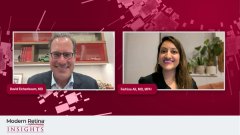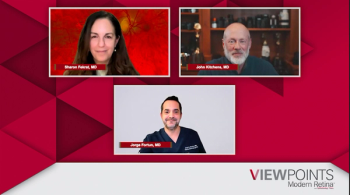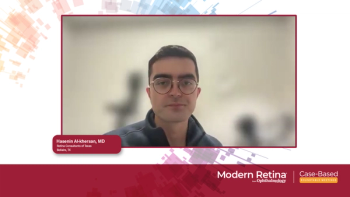
Helping Patients Understand the Urgency of Early Action in Geographic Atrophy
Panelists discuss how conversations with patients with geographic atrophy have evolved to emphasize the urgency of early intervention, with clinicians now able to offer hope through available treatments that can slow disease progression, while helping patients understand that their current vision represents the best they will ever have and leveraging family history awareness to motivate treatment consideration.
Episodes in this series

Patient conversations about geographic atrophy have undergone a fundamental transformation with the introduction of treatment options. Previously, clinicians could only deliver the devastating news that vision would progressively decline with no available interventions. Now, the critical question patients ask—“Is there anything that can be done?”—can be answered affirmatively. This shift represents a significant breakthrough in patient care, as clinicians can now offer hope through treatments that slow disease progression, even though they don’t constitute a cure. The ability to provide therapeutic options has fundamentally changed the tenor of these difficult conversations from purely prognostic to actively therapeutic.
Family history and genetic predisposition play crucial roles in helping patients understand their condition. Many patients with advanced macular degeneration have relatives who have experienced vision loss from similar conditions, providing a familiar reference point for understanding the disease’s potential impact. This genetic component serves as both an educational tool and a motivational factor, as patients can relate their condition to observed experiences within their families. The familiarity with the disease through family connections often helps patients better comprehend the seriousness of their diagnosis and the importance of early intervention.
The timing of treatment initiation requires careful consideration and patient education. Although treatment options are now available, many clinicians prefer not to begin therapy on the day of initial diagnosis, allowing patients time to process the information and make informed decisions. The conversation emphasizes that patients possess the maximum amount of healthy retinal tissue at the time of diagnosis, making early intervention crucial for preserving vision. Clinicians must balance the urgency of treatment with the need to avoid overwhelming patients with the bleakness of progressive, incurable vision loss, while simultaneously conveying hope through available maintenance treatments that can slow disease progression.
Newsletter
Keep your retina practice on the forefront—subscribe for expert analysis and emerging trends in retinal disease management.






































